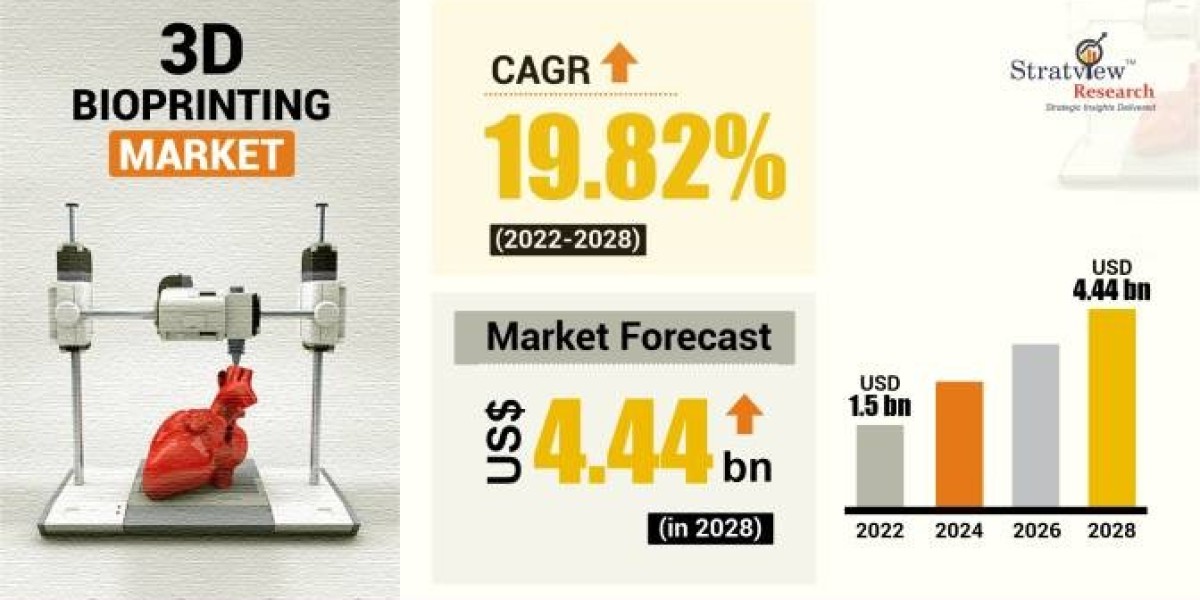D bioprinting is a rapidly developing technology with the potential to revolutionize the medical field. This article explores the exciting possibilities of 3D bioprinting and examines the current state of the 3D bioprinting market.
"The global 3D bioprinting market size was valued at USD 1.5 billion in 2022 and is forecast to grow to USD 4.44 billion by 2028 at a CAGR of 19.82% during 2023-2028".
What is 3D Bioprinting?
Traditional 3D printing uses various materials to create physical objects. Bioprinting takes this concept a step further by using biocompatible materials, or "bioinks," to print living cells and tissues. This allows for the creation of complex biological structures, including:
Tissues for transplants: Bioprinting has the potential to address the critical shortage of donor organs. By printing tissues that match a patient's specific needs, bioprinting could significantly improve transplant outcomes and save lives.
Personalized prosthetics: Bioprinting could create prosthetics that are customized to a patient's anatomy, leading to improved fit and functionality.
Drug discovery and testing: Bioprinted tissues can be used to create more realistic models of human organs and diseases, which can accelerate drug discovery and testing processes.
The 3D Bioprinting Market: Potential and Challenges
The 3D bioprinting market is still in its early stages, but it is expected to grow rapidly in the coming years. Here's a look at some of the factors driving this growth:
Increasing demand for personalized medicine: Patients are increasingly demanding treatments tailored to their specific needs. 3D bioprinting offers a unique way to achieve this level of personalization.
Advancements in bioink technology: Researchers are constantly developing new bioinks that are more biocompatible and versatile, allowing for the printing of more complex tissues.
Growing government and private sector investment: There is significant investment in 3D bioprinting research and development from both government agencies and private companies.
However, there are also challenges that need to be addressed before 3D bioprinting can reach its full potential:
Technical limitations: Current bioprinting techniques are limited in the complexity of tissues they can produce.
Regulatory hurdles: Regulations for bioprinted tissues and organs need to be established to ensure safety and efficacy.
Cost considerations: 3D bioprinting technology is still expensive, which could limit its accessibility.
Conclusion
Despite the challenges, 3D bioprinting holds immense promise for the future of medicine. As technology continues to advance and costs decrease, we can expect to see 3D bioprinting play an increasingly important role in healthcare. This technology has the potential to transform the way we treat diseases, replace damaged tissues, and improve patient outcomes. The future of medicine is being shaped by 3D bioprinting, and the possibilities are truly exciting.
To read in detail about market dynamics, Register here: https://www.stratviewresearch.com/Request-Sample/2070/3D-Bioprinting-Market.html#form



